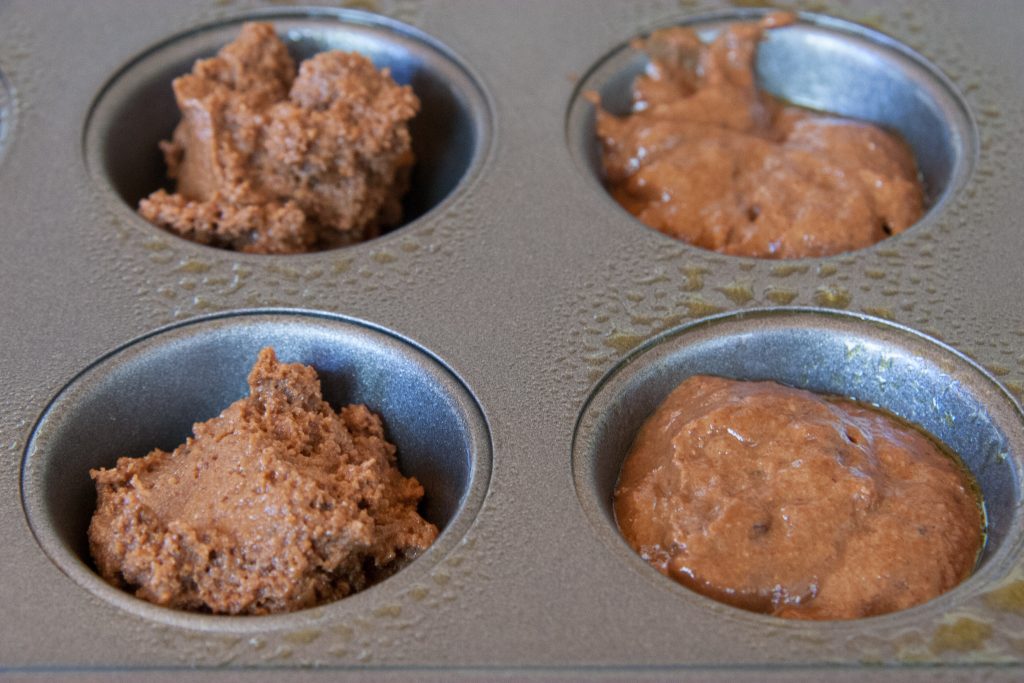
gelatin leached on the left, jar leached on the right
I’ve been acorn-obsessed for the last few weeks, getting ready to teach a Cooking with Acorns class at the Midwest Wild Harvest Festival. We’ll be working with both hot and cold leached acorns, and I’ve been preparing batches of acorns, processed every which way, to bring with me. Note: This is a fantastic annual event. A friendlier, more welcoming group of people I’ve never met. And what a joy to meet enlightened individuals who don’t think foraging is some bizarre, fringe-y activity.
Friend and colleague Mike Krebill pointed me toward a new-to-me-method of cold leaching, one that uses gelatin to remove the tannins from acorns. He also warned that, once, his acorn muffins contained long, gummy strands of gelatin, apparently because he hadn’t rinsed the leached acorn meal well enough. Oops!
Cold water leaching is better than hot water leaching if you want to create acorn flour for baking. While acorn flour contains no gluten (so it won’t rise or bind on its own) it does contain starch that acts as a binder. But cold water leaching is often slow. It can take days (or weeks) to accomplish and some people feel the repeated changes of water leach away flavor along with the tannins. The gelatin method is described as leaving the flavor intact, since it removes the tannins with fewer changes of water.
I used a combination of Mike’s directions and those found in Helen Ross Russell’s book, Foraging for Dinner. The method is also referred to, albeit briefly and with no specifics, in Edible Wild Plants of Eastern North America, by Merritt Lyndon Fernald and Alfred Charles Kinsey. I put 4 cups of coarsely ground acorn meal in a pot and sprinkled a teaspoon of gelatin over it. Then I poured boiling water over the meal, covering it by several inches. After eight hours I poured off the water and repeated the process for a total of three soaks in 24 hours. Heeding Mike’s warning to rinse well (and thereby avoid gelatinous strings inside the muffins), I added cold water to the acorn meal after pouring off the final gelatin, then dumped the wet meal into a colander lined with a dish towel, and squeezed the remaining liquid out of the meal. (Caution: the acorns stained my dish towel. It is now a dedicated, acorn-flour-squeezing dish towel.)
I was curious to see if this new method produced a more flavorful flour (and to see if I’d avoided the interior gelatinous strings) so I did a side-by-side comparison with two batches of acorn flour: one cold leached via the jar method and one cold leached via the gelatin method. I sit here, having just removed the muffins from the oven, and I’m confounded by the results.
Immediately upon mixing the batters, the difference was visually obvious. The gelatin leached acorn flour made a much thicker, rougher batter. The jar leached flour made a smooth, pour-able batter (see photo above). Everything else in these two batches was the same, including the fineness of the grind of the flours themselves. The cooking time was also the same, which surprised me. I thought the more liquid batter would require a longer cooking time. The visual difference persisted through to the end, with the gelatin leached muffins looking rough and craggy, and the jar leached muffins baking to a smooth shape.
Even more confusing, I taste no difference whatsoever in the flavors of the two muffins. The difference is purely visual. I even made one muffin with leftovers of each flour (jar leached batter on the bottom, gelatin leached batter on top), thinking a single bite with two different batters might highlight the differences in flavor. Nothing. Nada. Bupkiss.
Why do they look so different? My best guess is that some gelatin remained in the flour and absorbed the liquid almost immediately upon contact with the milk, oil, and egg. Of course, one experiment doesn’t give me enough data points, so there’s more work to do. And that’s one reason I’m posting this. Has anyone else done a side by side comparison of these two methods? I would happily learn from your experience!
I’m headed back into the kitchen now to try two batches of acorn cookies. Ah the life of a forager. There’s always more to learn.
So interesting. Love the side by side visuals.
There are 4 different binders of (bitter) tannins:
– proteins (saliva, gelatin, milk, egg white, etc.)
– alkaloids
– water
– anthocyanins
Interesting. Can you suggest any methods of using alkaloids or anthocyanins to leach acorn tannins?
Take seeds that are reach in alkaloids (for example seeds of lupin seeds). Grind them to a fine flour. Make warm (not hot) bath and pour ground seeds rich in alkaloids. Put halves of acorns into solution. Keep warm for at least 3 hours, don’t boil. Repeat 2-3 times. Don’t reuse same water (always put freshly ground seeds rich in alkaloids). Use lupins with high alkaloid content – bitter ones (there are also sweet lupins on the market which have very low alkaloid content – they will not work). Rinse well before consuming.
With anthocyanins take any vegetable/ fruit that is rich of anthocyanins – for example chokeberry. Make fresh juice out of chokeberry. Don’t warm juice up, Use room tmperature. Put halves of acorns into the juice. Let it sit for 36 hours. Stir every 12 hours. There is no need to rinse with clean water, just let acorns dry out.
If acorns are still bitter whatever the method then leach them with pure water one time (24-36 hours).
Fascinating. I’m especially curious about the anthocyanins. I’ve never heard of either of these possibilities and would like to know more. Do you have any references you can share, or is the above based on personal experience?
How to use saliva , egg white or milk to debitter acorn?